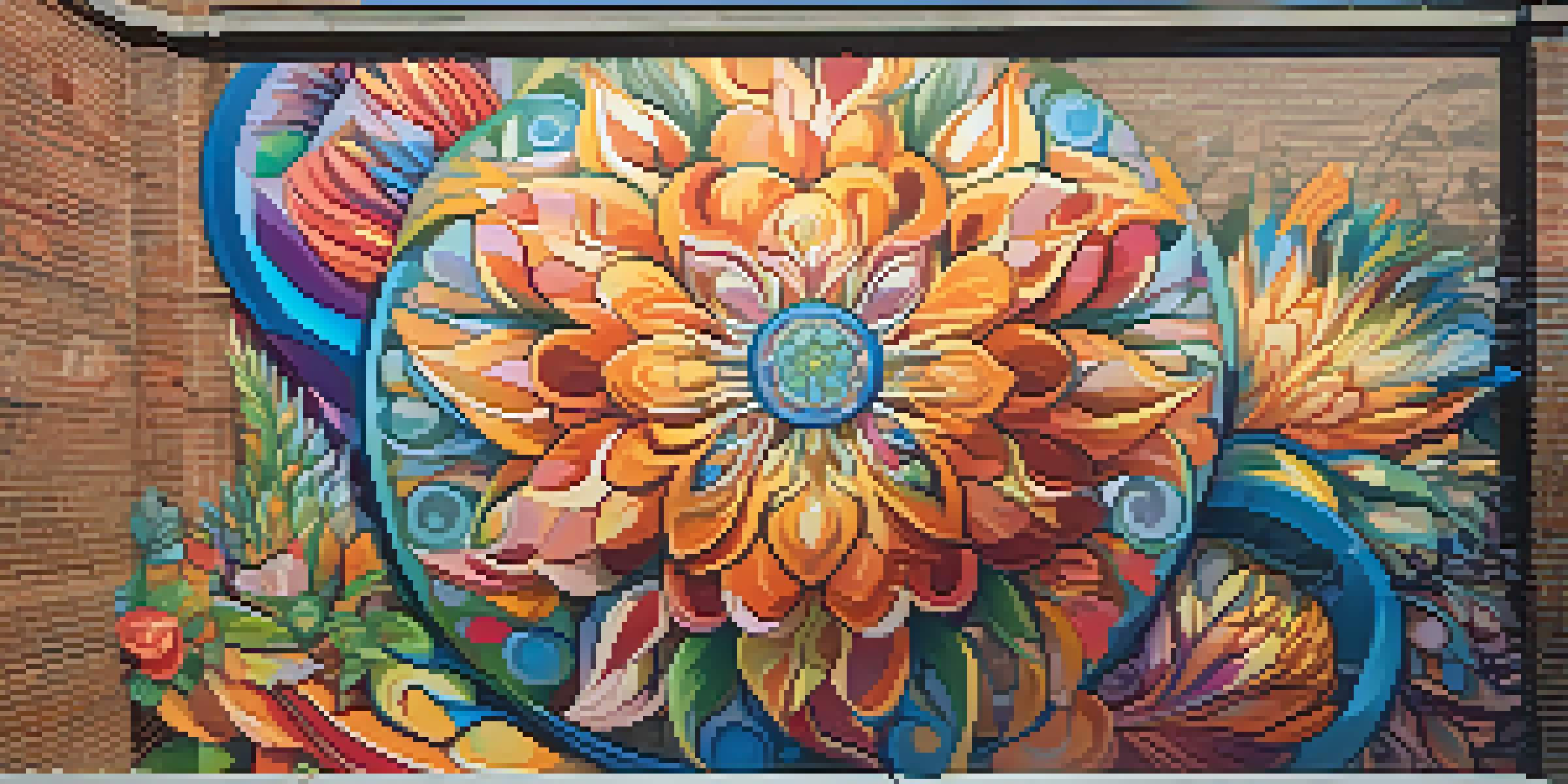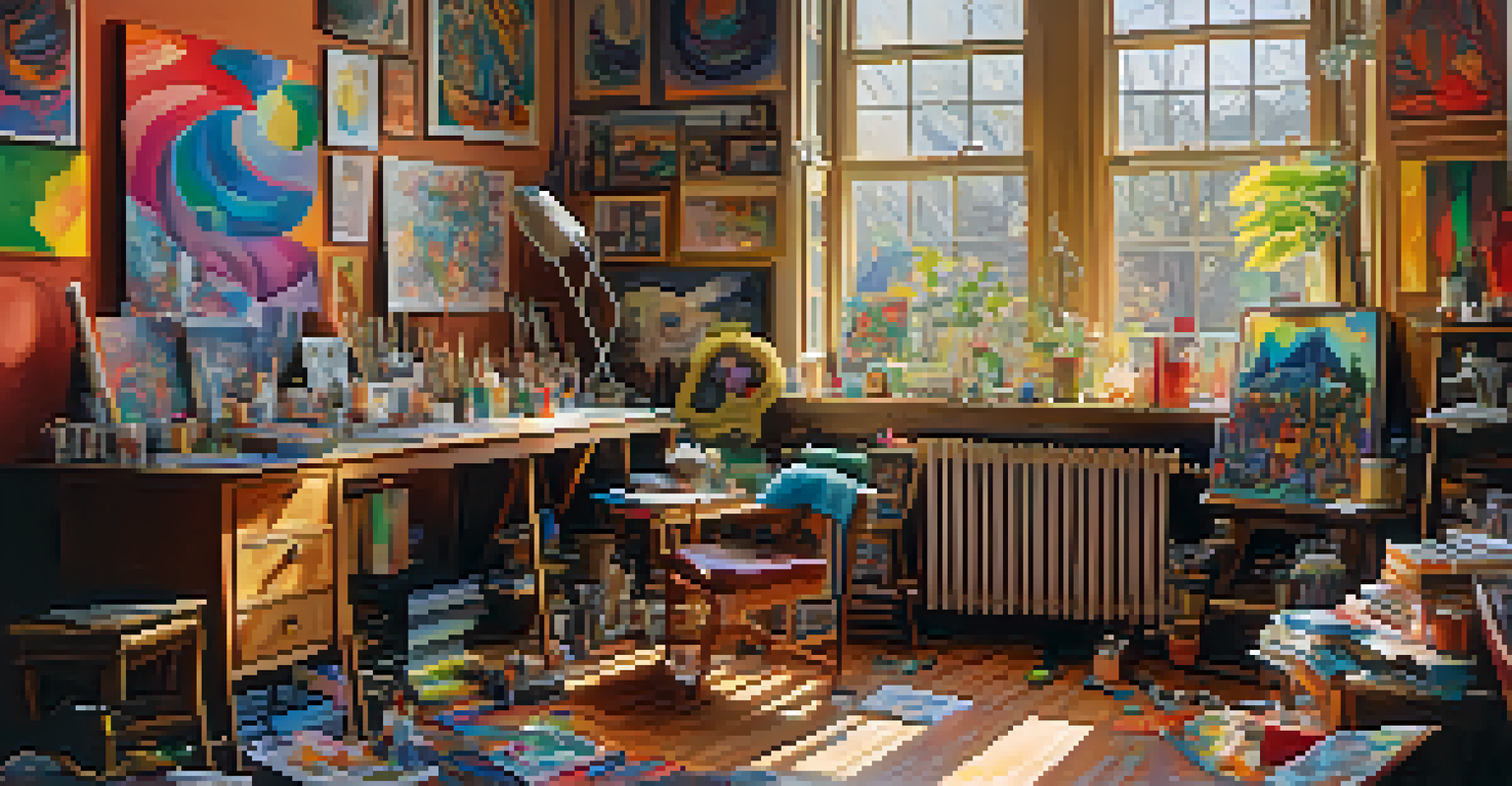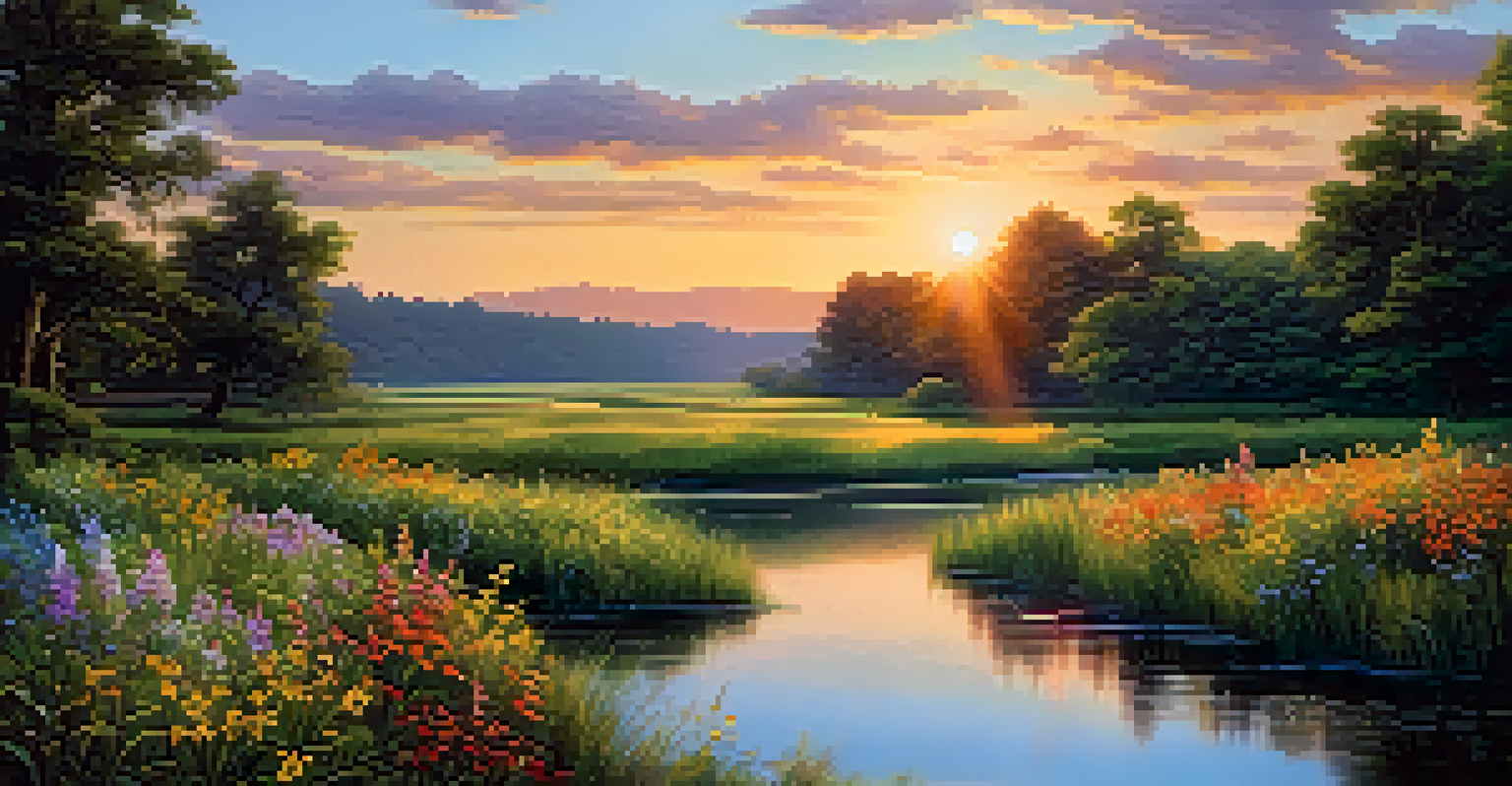Cultural Reflections: Entheogens in Contemporary Art Narratives

Understanding Entheogens: More than Just Psychedelics
Entheogens are substances that can induce altered states of consciousness, often used in spiritual or religious contexts. Examples include psilocybin mushrooms and ayahuasca, which have been utilized for centuries to connect with deeper aspects of existence. In contemporary art, these substances serve as a lens through which artists explore the human experience, pushing boundaries of perception and creativity.
Psychedelics are a gateway to a new understanding of the human experience.
The connection between entheogens and art isn't new; many famous artists have drawn inspiration from altered states. For instance, the surrealists embraced dream-like imagery that echoed the effects of psychedelics. Today, this connection is being revisited, with artists using entheogens not only as influences but as integral parts of their creative process.
This resurgence has sparked a conversation about the role of these substances in modern society. As more artists openly discuss their experiences with entheogens, we're beginning to see a shift in how these substances are perceived—moving from taboo to a source of inspiration for creative expression.
Artistic Expression: The Influence of Psychedelic Experiences
Psychedelic experiences often lead to profound insights and heightened emotions, which can significantly influence an artist's work. Artists who have experimented with entheogens frequently describe their creative process as being enhanced by these experiences, leading to vibrant colors, unusual forms, and complex narratives. This transformation can be seen in various art forms, from painting to digital media.

Take, for example, the vibrant murals that have emerged from urban artists influenced by psychedelic culture. These works often reflect themes of interconnectedness, spirituality, and the exploration of consciousness, inviting viewers to engage on multiple levels. Through these artistic expressions, entheogens provide a means to visualize complex ideas and feelings that might otherwise remain abstract.
Entheogens Inspire Modern Art
Contemporary artists are increasingly using entheogens as a source of inspiration and integral elements in their creative processes.
Moreover, the incorporation of psychedelic elements in art can serve as a bridge between the viewer's reality and the artist's vision. This connection not only enriches the viewing experience but also encourages a dialogue about consciousness, perception, and the nature of reality itself.
Cultural Context: Entheogens and Indigenous Practices
Indigenous cultures have long utilized entheogens in rituals, often viewing them as sacred tools for communication with the divine. This rich cultural heritage has not only informed the artists who draw inspiration from these practices but has also sparked a broader interest in the spiritual dimensions of art. Understanding these traditional uses can enhance our appreciation of contemporary works that reference these practices.
Art is the most beautiful of all lies; it is the only truth we can find in this world.
For instance, artists might incorporate symbols or motifs from indigenous practices into their work, creating a dialogue between past and present. This cross-pollination of ideas can foster a deeper understanding of cultural significance and the shared human experience. It also raises important questions about cultural appropriation and respect for the original contexts of these substances.
By acknowledging the roots of these practices, contemporary artists can create works that honor and respect indigenous traditions while exploring their own narratives and experiences. This nuanced approach not only enriches the artwork but also contributes to a larger conversation about identity, culture, and spirituality in the modern world.
Contemporary Artists: Who's Leading the Entheogenic Movement?
Many contemporary artists are at the forefront of exploring entheogens in their work, each bringing their unique perspective to the conversation. Artists like Alex Grey and Amanda Sage create stunning visuals that reflect psychedelic experiences, often merging spirituality and art. Their works not only captivate viewers but also invite them to ponder deeper existential questions.
These artists often engage in collaborative projects that explore the intersection of art, science, and spirituality. For example, some have worked with neuroscientists to understand how psychedelics affect perception, using that knowledge to inform their artistic choices. This interdisciplinary approach not only enhances their work but also broadens the scope of what art can represent.
Cultural Roots of Psychedelic Art
Indigenous practices inform contemporary art, raising important discussions about cultural appropriation and respect for traditional uses of entheogens.
Furthermore, art exhibitions focusing on psychedelic themes have gained popularity, providing a platform for these artists to showcase their work. Events like the 'Psychedelic Science' conference highlight the relevance of entheogens in contemporary culture, drawing connections between art, science, and spirituality.
Psychedelics and Mental Health: A New Artistic Lens
The conversation around entheogens has recently expanded to include their potential therapeutic benefits, particularly in mental health. Artists often draw on their personal experiences with mental health challenges and how entheogens have influenced their journeys. This exploration can lead to powerful and relatable artwork that resonates with many.
For instance, some artists use their mediums to depict the struggles and triumphs associated with mental health, often incorporating themes of healing and transformation. These narratives not only provide a voice for those experiencing similar challenges but also foster a sense of community and understanding among viewers. Art becomes a shared space for dialogue and healing.
As research continues to uncover the potential of psychedelics in treating conditions like depression and anxiety, artists are increasingly integrating these themes into their work. This evolving narrative highlights the importance of understanding the broader implications of entheogens, going beyond mere aesthetics to engage with significant societal issues.
Exhibitions and Events: Celebrating Psychedelic Art
Art exhibitions dedicated to psychedelic themes are becoming more common, showcasing works that celebrate the intersection of entheogens and creativity. These events provide artists with a platform to explore and share their experiences, while also inviting the public to engage with the art on a deeper level. Every exhibition serves as a reminder of the rich dialogue surrounding consciousness and creativity.
One notable example is the 'Psychedelic Art Exhibition,' which features artists from various backgrounds, each bringing their unique interpretations to the theme. These exhibitions encourage attendees to immerse themselves in the vibrant world of psychedelic art, often accompanied by workshops and panels that foster discussion around the creative process and the role of entheogens.
Therapeutic Benefits in Art
Artists are exploring the therapeutic potential of entheogens in mental health, creating relatable artwork that addresses personal struggles and fosters community.
Such events not only highlight the diversity of artistic expression but also promote a greater understanding of how entheogens can influence creativity. They create a community of like-minded individuals who share a passion for art, spirituality, and the exploration of consciousness, ultimately enriching the cultural landscape.
The Future of Entheogens in Art: Trends and Possibilities
As societal attitudes toward entheogens continue to evolve, their presence in art is likely to expand. Artists are increasingly using these substances as tools for exploration and creativity, leading to innovative works that challenge traditional boundaries. This trend suggests a future where entheogens play a central role in artistic expression, opening new avenues for exploration.
Moreover, the intersection of technology and psychedelics is an exciting frontier for contemporary artists. Virtual reality experiences, for instance, can simulate psychedelic experiences, providing an alternative platform for artistic expression. This melding of technology and art could lead to entirely new ways of experiencing and understanding the impact of entheogens.

Ultimately, the future of entheogens in art holds immense potential for fostering creativity and sparking important conversations about consciousness, culture, and human experience. As more artists explore these themes, we can look forward to a vibrant and dynamic artistic landscape that reflects the complexities of the human spirit.